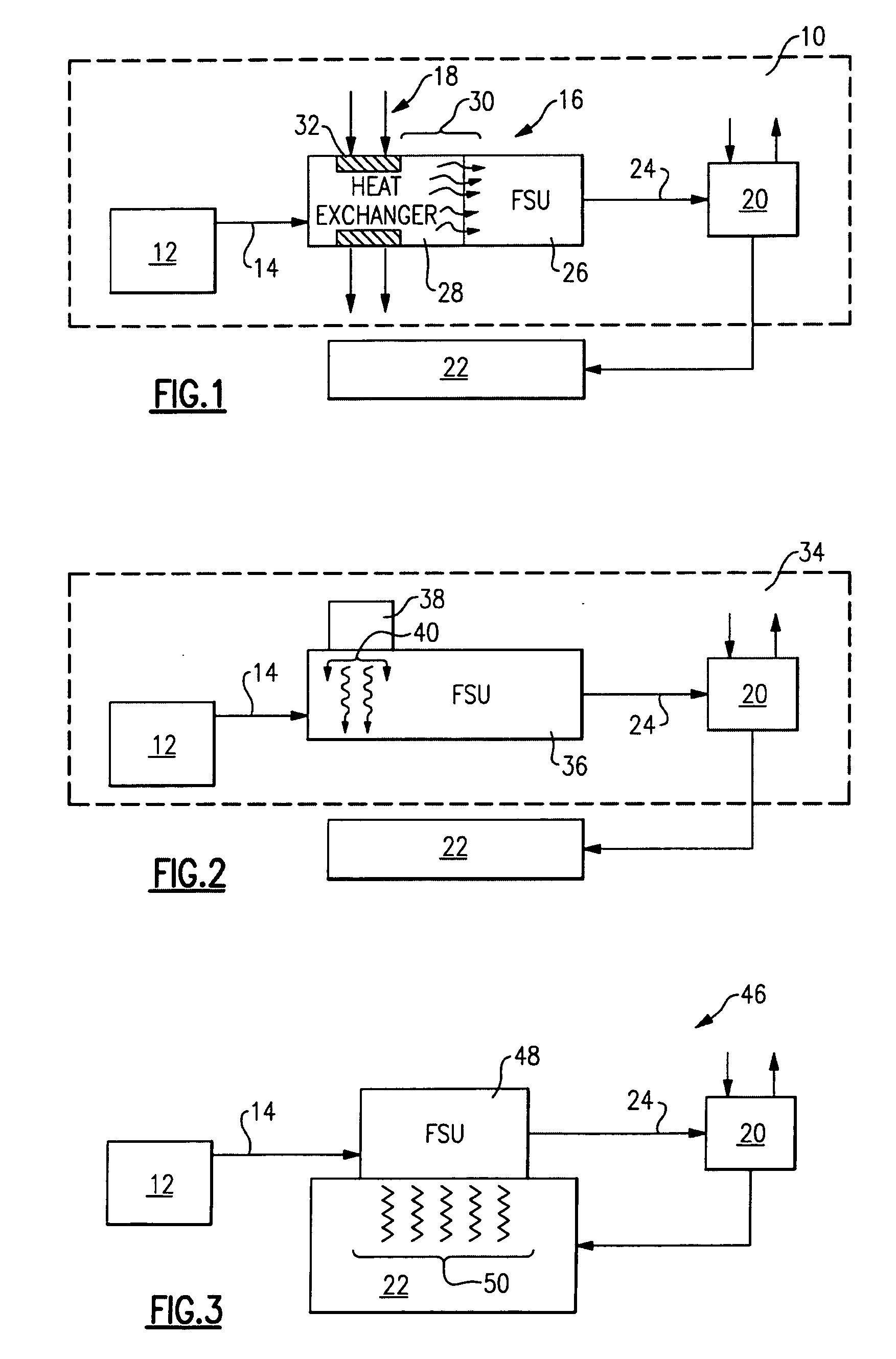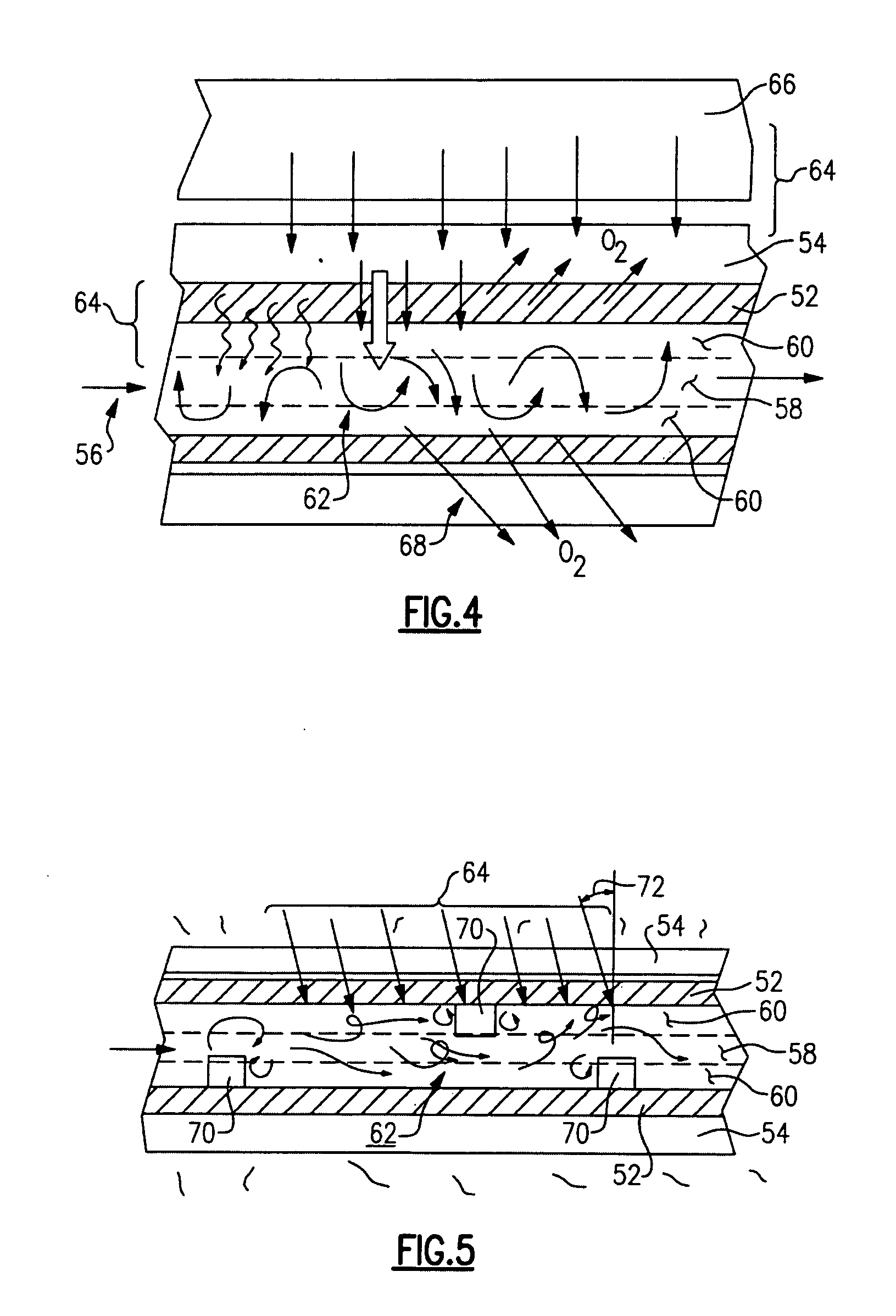Acoustic degassing heat exchanger
a heat exchanger and acoustic technology, applied in the direction of liquid degasification by filtration, lighting and heating apparatus, separation processes, etc., can solve the problems of increasing overall costs, unsatisfactory pressure drop, and incur undesirable pressure loss, so as to improve the overall fuel deoxygenation and improve the thermal capacity. , the effect of enhancing oxygen transfer
- Summary
- Abstract
- Description
- Claims
- Application Information
AI Technical Summary
Benefits of technology
Problems solved by technology
Method used
Image
Examples
Embodiment Construction
[0015]Referring to FIG. 1, a fuel delivery system 10 includes a fuel conditioning unit 16. The fuel conditioning unit 16 includes a heat exchanger 28 and a fuel stabilization unit 26 for removing a portion of dissolved oxygen from fuel 14. Fuel 14 from a fuel storage unit 12 includes dissolved oxygen. Fuel 24 leaving the fuel conditioning unit 16 includes a reduced amount of dissolved oxygen. Therefore, fuel 24 can be heated to higher temperatures that would not have been possible without first removing dissolved oxygen. The fuel 24 flows through a second heat exchanger 20 that advantageously utilizes the increased thermal capacity. Fuel 24 is then routed to an energy conversion device 22.
[0016]The heat exchanger 28 is mechanically attached or integrally formed with the fuel stabilization unit 26 to transmit vibratory energy 30 into fuel within the fuel stabilization unit 26. The heat exchanger 28 receives a flow of fluid medium 18, along with the flow of fuel 14. The flow of fluid ...
PUM
 Login to View More
Login to View More Abstract
Description
Claims
Application Information
 Login to View More
Login to View More - R&D
- Intellectual Property
- Life Sciences
- Materials
- Tech Scout
- Unparalleled Data Quality
- Higher Quality Content
- 60% Fewer Hallucinations
Browse by: Latest US Patents, China's latest patents, Technical Efficacy Thesaurus, Application Domain, Technology Topic, Popular Technical Reports.
© 2025 PatSnap. All rights reserved.Legal|Privacy policy|Modern Slavery Act Transparency Statement|Sitemap|About US| Contact US: help@patsnap.com



